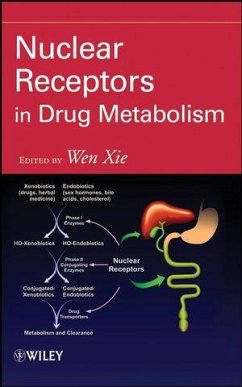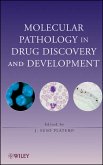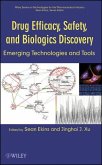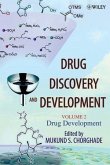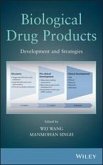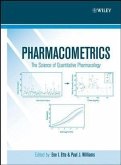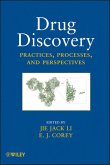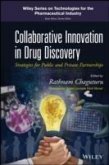Nuclear Receptors in Drug Metabolism (eBook, PDF)
Redaktion: Xie, Wen
117,99 €
117,99 €
inkl. MwSt.
Sofort per Download lieferbar

0 °P sammeln
117,99 €
Als Download kaufen

117,99 €
inkl. MwSt.
Sofort per Download lieferbar

0 °P sammeln
Jetzt verschenken
Alle Infos zum eBook verschenken
117,99 €
inkl. MwSt.
Sofort per Download lieferbar
Alle Infos zum eBook verschenken

0 °P sammeln
Nuclear Receptors in Drug Metabolism (eBook, PDF)
Redaktion: Xie, Wen
- Format: PDF
- Merkliste
- Auf die Merkliste
- Bewerten Bewerten
- Teilen
- Produkt teilen
- Produkterinnerung
- Produkterinnerung

Bitte loggen Sie sich zunächst in Ihr Kundenkonto ein oder registrieren Sie sich bei
bücher.de, um das eBook-Abo tolino select nutzen zu können.
Hier können Sie sich einloggen
Hier können Sie sich einloggen
Sie sind bereits eingeloggt. Klicken Sie auf 2. tolino select Abo, um fortzufahren.

Bitte loggen Sie sich zunächst in Ihr Kundenkonto ein oder registrieren Sie sich bei bücher.de, um das eBook-Abo tolino select nutzen zu können.
This book gives you an updated and expert overview of nuclear hormone receptors in drug metabolism and drug development and equips you with the interdisciplinary understanding of these receptors and how they can be regulated. Pharmaceutical researchers will find this extremely useful in developing drugs for cancer, heart disease, and diabetes treatment. This comprehensive resource collects scattered materials into one handy, informative volume.
- Geräte: PC
- mit Kopierschutz
- eBook Hilfe
- Größe: 8.14MB
Andere Kunden interessierten sich auch für
![Molecular Pathology in Drug Discovery and Development (eBook, PDF) Molecular Pathology in Drug Discovery and Development (eBook, PDF)]() Molecular Pathology in Drug Discovery and Development (eBook, PDF)131,99 €
Molecular Pathology in Drug Discovery and Development (eBook, PDF)131,99 €![Drug Efficacy, Safety, and Biologics Discovery (eBook, PDF) Drug Efficacy, Safety, and Biologics Discovery (eBook, PDF)]() Drug Efficacy, Safety, and Biologics Discovery (eBook, PDF)131,99 €
Drug Efficacy, Safety, and Biologics Discovery (eBook, PDF)131,99 €![Drug Discovery and Development, Volume 2 (eBook, PDF) Drug Discovery and Development, Volume 2 (eBook, PDF)]() Drug Discovery and Development, Volume 2 (eBook, PDF)136,99 €
Drug Discovery and Development, Volume 2 (eBook, PDF)136,99 €![Biological Drug Products (eBook, PDF) Biological Drug Products (eBook, PDF)]() Biological Drug Products (eBook, PDF)167,99 €
Biological Drug Products (eBook, PDF)167,99 €![Pharmacometrics (eBook, PDF) Pharmacometrics (eBook, PDF)]() Pharmacometrics (eBook, PDF)220,99 €
Pharmacometrics (eBook, PDF)220,99 €![Drug Discovery (eBook, PDF) Drug Discovery (eBook, PDF)]() Drug Discovery (eBook, PDF)119,99 €
Drug Discovery (eBook, PDF)119,99 €![Collaborative Innovation in Drug Discovery (eBook, PDF) Collaborative Innovation in Drug Discovery (eBook, PDF)]() Collaborative Innovation in Drug Discovery (eBook, PDF)123,99 €
Collaborative Innovation in Drug Discovery (eBook, PDF)123,99 €-
-
-
This book gives you an updated and expert overview of nuclear hormone receptors in drug metabolism and drug development and equips you with the interdisciplinary understanding of these receptors and how they can be regulated. Pharmaceutical researchers will find this extremely useful in developing drugs for cancer, heart disease, and diabetes treatment. This comprehensive resource collects scattered materials into one handy, informative volume.
Hinweis: Dieser Artikel kann nur an eine deutsche Lieferadresse ausgeliefert werden.
Dieser Download kann aus rechtlichen Gründen nur mit Rechnungsadresse in A, B, BG, CY, CZ, D, DK, EW, E, FIN, F, GR, HR, H, IRL, I, LT, L, LR, M, NL, PL, P, R, S, SLO, SK ausgeliefert werden.
Hinweis: Dieser Artikel kann nur an eine deutsche Lieferadresse ausgeliefert werden.
Produktdetails
- Produktdetails
- Verlag: John Wiley & Sons
- Seitenzahl: 352
- Erscheinungstermin: 11. November 2008
- Englisch
- ISBN-13: 9780470409053
- Artikelnr.: 37292268
- Verlag: John Wiley & Sons
- Seitenzahl: 352
- Erscheinungstermin: 11. November 2008
- Englisch
- ISBN-13: 9780470409053
- Artikelnr.: 37292268
- Herstellerkennzeichnung Die Herstellerinformationen sind derzeit nicht verfügbar.
Wen Xie, MD, PHD, directs the Center for Pharmacogenetics at the University of Pittsburgh's School of Pharmacy. Among the courses he teaches are Pharmaceutical Analysis: Nucleic Acid Techniques; Pharmacogenomics: Pharmacogenetics of Drug Metabolizing Enzymes; and Drug Development. Dr. Xie is the author or coauthor of nearly seventy journal articles and more than seventy invited lectures.
Preface.
Abbreviations.
Contributors.
Chapter 1. Drug Metabolism: Significance and Challenges (Chandra Prakash
and Alfin D.N. Vaz).
1.1. Introduction.
1.2. Phase I Drug Metabolizing Enzymes.
1.3. Phase II Conjugative Enzymes.
1.4. Drug Efflux Transporters.
1.5. Drug Uptake Transporters.
1.6. Challenges in Drug Metabolism.
1.7. Summary.
1.8. References.
Chapter 2. Establishing Orphan Nuclear Receptors PXR and CAR as Xenobiotic
Receptors (Tao Li, Junichiro Sonoda, and Ronald M. Evans).
2.1. Introduction.
2.2. Nuclear Receptor and Orphan Nuclear Receptor Superfamily.
2.3. Orphan Nuclear Receptors as Xenobiotic Receptors and Their
Implications in Phase I Enzyme Regulation.
2.4. Perspectives.
2.5. References.
Chapter 3. Nuclear Receptor-Mediated Regulation of Phase II Conjugating
Enzymes (Olivier Barbier).
3.1. Introduction.
3.2. Phase II Drug Metabolizing Enzymes.
3.3. The Xenosensors CAR and PXR: 2 Masters Regulators of Phase II
Metabolism.
3.4. AhR And Nrf2, Two Important Regulators of Phase II Enzymes.
3.5. PPARS and Phase II XMEs Regulation.
3.6. FXR/LXR and Phase II XMEs Regulation.
3.7. HNF and Phase II XMEs Regulation.
3.8. Regulation of Phase II Conjugating Enzymes by Steroid and Thyroid
Receptors.
3.9. Concluding remarks and perspectives.
3.10. References.
Chapter 4. Nuclear Receptor-Mediated Regulation of Drug Transporters
(Oliver Burk).
4.1. Introduction.
4.2. Drug Transporters.
4.3. Induction of Drug Transporters by Activation of PXR and CAR.
4.4. Induction of Drug Transporters by Activation of PPARa.
4.5. Molecular Mechanism of PXR- and CAR-Dependent Drug Transporter
Regulation.
4.6. Induction of Drug Transporter Expression and Drug Disposition.
4.7. Conclusions and Future Perspectives.
4.8. References.
Chapter 5. Structure and Function of PXR and CAR (X. Edward Zhou and H.
Eric Xu).
5.1. Introduction.
5.2. Structure and Function of PXR.
5.3. Structure and Function of CAR.
5.4. Concluding Remarks.
5.5. References.
Chapter 6. Xenobiotic Receptor CoFactors and Coregulators (John Y. L.
Chiang).
6.1. Regulation of PXR and CAR Nuclear Translocation.
6.2. Nuclear Receptor Coregulators and Epigenetic Regulation of Gene
Transcription.
6.3. PXR and CAR Crosstalk with other Nuclear Receptors and Transcription
Factors.
6.4. PXR and CAR Regulation of Lipid and Glucose Homeostasis.
6.5. Conclusion.
6.6. References.
Chapter 7. Animal Models of Xenobiotic Nuclear Receptors and Their Utility
in Drug Development (Haibiao Gong and Wen Xie).
7.1. Introduction.
7.2. PXR and CAR Loss-of-Function (Knock Out) Mouse Models.
7.3. PXR and CAR Gain-of-Function (Transgenic) Mouse Models.
7.4. Humanized Mouse Models.
7.5. Utility of Xenobiotic Mouse Models in Pharmaceutical Development.
7.6. Closing Remarks.
7.7. References.
Chapter 8. Nuclear Receptors and Drug-Drug Interactions with Prescription
Drugs and Herbal Medicines (Rommel G. Tirona and Richard B. Kim).
8.1. Introduction.
8.2. Prescription Drugs/Drug Classes Commonly Involved in Inductive
Interactions.
8.3. Herbal Drug Medicines Commonly Involved in Inductive Interactions.
8.4. Pharmacology of Induction.
8.5. Clinical Aspects of Induction-Type Drug Interactions.
8.6. Inhibition of Nuclear Receptors in Clinical Drug Interactions.
8.7. Nuclear Receptor-Mediated Drug Side-Effects.
8.8. Perspectives.
8.9. References.
Chapter 9. Genetic Variants of Xenobiotic Receptors and Their Implications
in Drug Metabolism and Pharmacogenetics (Jatinder Lamba and Erin G.
Schuetz).
9.1. PXR (Pregnane X Receptor) Background.
9.2. PXR Gene Structure.
9.3. PXR Alternative mRNAs.
9.4. Genetic Variants in PXR's Exons and their Functional Consequences.
9.5. Genetic Variants In Introns 2-8 and the 3'-UTR of PXR and their
Functional Consequences.
9.6. Resequencing Strategy for the PXR Promoter and Intron 1.
9.7. Genetic Variation in the PXR Promoter and 5'-UTR and its Functional
Relevance.
9.8. Genetic Variation in PXR's Intron 1 and its Functional Relevance.
9.9. In Silico Analysis for Functional Effect of SNPs in PXR's Promoter,
5'-UTR and Intron 1.
9.10. SNPs in PXR's Promoter and Intron 1 Affect Putative HNF Binding
Sites.
9.11. PXR SNPs Have Been Associated with Intestinal and Hepatic
Inflammation and Diseases.
9.12. PXR Structural Variation and other Genomic Features.
9.13. PXR Summary.
9.14. CAR-Background.
9.15. CAR Gene Structure.
9.16. CAR Alternatively Spliced RNAs.
9.17. CAR Genetic Variants (SNPs) and their Functional Consequences.
9.18. CAR Summary.
9.19. References.
Chapter 10. Beyond PXR and CAR, Regulation of Xenobiotic Metabolism by
Other Nuclear Receptors (Martin Wagner, Gernot Zollner, and Michael
Trauner).
10.1. Introduction.
10.2. Farnesoid X Receptor.
10.3. Hepatocyte Nuclear Factor 4.
10.4. Vitamin D receptor.
10.5. Glucocorticoid Receptor.
10.6. Peroxisome Proliferator Activated Receptors.
10.7. Aryl Hydrocarbon Receptor (AhR).
10.8. Conclusions.
10.9. References.
Chapter 11. Emerging Role of Retinoid-Related Orphan Receptor (ROR) and Its
Crosst alk With LXR(Liver X Receptor) in the Regulation Of
Drug-Metabolizing Enzymes (Taira Wada and Wen Xie).
11.1. Introduction.
11.2. Orphan Nuclear Receptor ROR¿.
11.3. A Potential Role of RORs in Xeno- and Endobiotic Gene Regulation.
11.4. LXR and its Regulation of Drug Metabolizing Enzymes.
11.5. A Functional Cross-Talk Between RORa and LXR in the Regulation of
Xeno- and Endobiotic Genes.
11.6. Closing Remarks.
Index.
Abbreviations.
Contributors.
Chapter 1. Drug Metabolism: Significance and Challenges (Chandra Prakash
and Alfin D.N. Vaz).
1.1. Introduction.
1.2. Phase I Drug Metabolizing Enzymes.
1.3. Phase II Conjugative Enzymes.
1.4. Drug Efflux Transporters.
1.5. Drug Uptake Transporters.
1.6. Challenges in Drug Metabolism.
1.7. Summary.
1.8. References.
Chapter 2. Establishing Orphan Nuclear Receptors PXR and CAR as Xenobiotic
Receptors (Tao Li, Junichiro Sonoda, and Ronald M. Evans).
2.1. Introduction.
2.2. Nuclear Receptor and Orphan Nuclear Receptor Superfamily.
2.3. Orphan Nuclear Receptors as Xenobiotic Receptors and Their
Implications in Phase I Enzyme Regulation.
2.4. Perspectives.
2.5. References.
Chapter 3. Nuclear Receptor-Mediated Regulation of Phase II Conjugating
Enzymes (Olivier Barbier).
3.1. Introduction.
3.2. Phase II Drug Metabolizing Enzymes.
3.3. The Xenosensors CAR and PXR: 2 Masters Regulators of Phase II
Metabolism.
3.4. AhR And Nrf2, Two Important Regulators of Phase II Enzymes.
3.5. PPARS and Phase II XMEs Regulation.
3.6. FXR/LXR and Phase II XMEs Regulation.
3.7. HNF and Phase II XMEs Regulation.
3.8. Regulation of Phase II Conjugating Enzymes by Steroid and Thyroid
Receptors.
3.9. Concluding remarks and perspectives.
3.10. References.
Chapter 4. Nuclear Receptor-Mediated Regulation of Drug Transporters
(Oliver Burk).
4.1. Introduction.
4.2. Drug Transporters.
4.3. Induction of Drug Transporters by Activation of PXR and CAR.
4.4. Induction of Drug Transporters by Activation of PPARa.
4.5. Molecular Mechanism of PXR- and CAR-Dependent Drug Transporter
Regulation.
4.6. Induction of Drug Transporter Expression and Drug Disposition.
4.7. Conclusions and Future Perspectives.
4.8. References.
Chapter 5. Structure and Function of PXR and CAR (X. Edward Zhou and H.
Eric Xu).
5.1. Introduction.
5.2. Structure and Function of PXR.
5.3. Structure and Function of CAR.
5.4. Concluding Remarks.
5.5. References.
Chapter 6. Xenobiotic Receptor CoFactors and Coregulators (John Y. L.
Chiang).
6.1. Regulation of PXR and CAR Nuclear Translocation.
6.2. Nuclear Receptor Coregulators and Epigenetic Regulation of Gene
Transcription.
6.3. PXR and CAR Crosstalk with other Nuclear Receptors and Transcription
Factors.
6.4. PXR and CAR Regulation of Lipid and Glucose Homeostasis.
6.5. Conclusion.
6.6. References.
Chapter 7. Animal Models of Xenobiotic Nuclear Receptors and Their Utility
in Drug Development (Haibiao Gong and Wen Xie).
7.1. Introduction.
7.2. PXR and CAR Loss-of-Function (Knock Out) Mouse Models.
7.3. PXR and CAR Gain-of-Function (Transgenic) Mouse Models.
7.4. Humanized Mouse Models.
7.5. Utility of Xenobiotic Mouse Models in Pharmaceutical Development.
7.6. Closing Remarks.
7.7. References.
Chapter 8. Nuclear Receptors and Drug-Drug Interactions with Prescription
Drugs and Herbal Medicines (Rommel G. Tirona and Richard B. Kim).
8.1. Introduction.
8.2. Prescription Drugs/Drug Classes Commonly Involved in Inductive
Interactions.
8.3. Herbal Drug Medicines Commonly Involved in Inductive Interactions.
8.4. Pharmacology of Induction.
8.5. Clinical Aspects of Induction-Type Drug Interactions.
8.6. Inhibition of Nuclear Receptors in Clinical Drug Interactions.
8.7. Nuclear Receptor-Mediated Drug Side-Effects.
8.8. Perspectives.
8.9. References.
Chapter 9. Genetic Variants of Xenobiotic Receptors and Their Implications
in Drug Metabolism and Pharmacogenetics (Jatinder Lamba and Erin G.
Schuetz).
9.1. PXR (Pregnane X Receptor) Background.
9.2. PXR Gene Structure.
9.3. PXR Alternative mRNAs.
9.4. Genetic Variants in PXR's Exons and their Functional Consequences.
9.5. Genetic Variants In Introns 2-8 and the 3'-UTR of PXR and their
Functional Consequences.
9.6. Resequencing Strategy for the PXR Promoter and Intron 1.
9.7. Genetic Variation in the PXR Promoter and 5'-UTR and its Functional
Relevance.
9.8. Genetic Variation in PXR's Intron 1 and its Functional Relevance.
9.9. In Silico Analysis for Functional Effect of SNPs in PXR's Promoter,
5'-UTR and Intron 1.
9.10. SNPs in PXR's Promoter and Intron 1 Affect Putative HNF Binding
Sites.
9.11. PXR SNPs Have Been Associated with Intestinal and Hepatic
Inflammation and Diseases.
9.12. PXR Structural Variation and other Genomic Features.
9.13. PXR Summary.
9.14. CAR-Background.
9.15. CAR Gene Structure.
9.16. CAR Alternatively Spliced RNAs.
9.17. CAR Genetic Variants (SNPs) and their Functional Consequences.
9.18. CAR Summary.
9.19. References.
Chapter 10. Beyond PXR and CAR, Regulation of Xenobiotic Metabolism by
Other Nuclear Receptors (Martin Wagner, Gernot Zollner, and Michael
Trauner).
10.1. Introduction.
10.2. Farnesoid X Receptor.
10.3. Hepatocyte Nuclear Factor 4.
10.4. Vitamin D receptor.
10.5. Glucocorticoid Receptor.
10.6. Peroxisome Proliferator Activated Receptors.
10.7. Aryl Hydrocarbon Receptor (AhR).
10.8. Conclusions.
10.9. References.
Chapter 11. Emerging Role of Retinoid-Related Orphan Receptor (ROR) and Its
Crosst alk With LXR(Liver X Receptor) in the Regulation Of
Drug-Metabolizing Enzymes (Taira Wada and Wen Xie).
11.1. Introduction.
11.2. Orphan Nuclear Receptor ROR¿.
11.3. A Potential Role of RORs in Xeno- and Endobiotic Gene Regulation.
11.4. LXR and its Regulation of Drug Metabolizing Enzymes.
11.5. A Functional Cross-Talk Between RORa and LXR in the Regulation of
Xeno- and Endobiotic Genes.
11.6. Closing Remarks.
Index.
Preface.
Abbreviations.
Contributors.
Chapter 1. Drug Metabolism: Significance and Challenges (Chandra Prakash
and Alfin D.N. Vaz).
1.1. Introduction.
1.2. Phase I Drug Metabolizing Enzymes.
1.3. Phase II Conjugative Enzymes.
1.4. Drug Efflux Transporters.
1.5. Drug Uptake Transporters.
1.6. Challenges in Drug Metabolism.
1.7. Summary.
1.8. References.
Chapter 2. Establishing Orphan Nuclear Receptors PXR and CAR as Xenobiotic
Receptors (Tao Li, Junichiro Sonoda, and Ronald M. Evans).
2.1. Introduction.
2.2. Nuclear Receptor and Orphan Nuclear Receptor Superfamily.
2.3. Orphan Nuclear Receptors as Xenobiotic Receptors and Their
Implications in Phase I Enzyme Regulation.
2.4. Perspectives.
2.5. References.
Chapter 3. Nuclear Receptor-Mediated Regulation of Phase II Conjugating
Enzymes (Olivier Barbier).
3.1. Introduction.
3.2. Phase II Drug Metabolizing Enzymes.
3.3. The Xenosensors CAR and PXR: 2 Masters Regulators of Phase II
Metabolism.
3.4. AhR And Nrf2, Two Important Regulators of Phase II Enzymes.
3.5. PPARS and Phase II XMEs Regulation.
3.6. FXR/LXR and Phase II XMEs Regulation.
3.7. HNF and Phase II XMEs Regulation.
3.8. Regulation of Phase II Conjugating Enzymes by Steroid and Thyroid
Receptors.
3.9. Concluding remarks and perspectives.
3.10. References.
Chapter 4. Nuclear Receptor-Mediated Regulation of Drug Transporters
(Oliver Burk).
4.1. Introduction.
4.2. Drug Transporters.
4.3. Induction of Drug Transporters by Activation of PXR and CAR.
4.4. Induction of Drug Transporters by Activation of PPARa.
4.5. Molecular Mechanism of PXR- and CAR-Dependent Drug Transporter
Regulation.
4.6. Induction of Drug Transporter Expression and Drug Disposition.
4.7. Conclusions and Future Perspectives.
4.8. References.
Chapter 5. Structure and Function of PXR and CAR (X. Edward Zhou and H.
Eric Xu).
5.1. Introduction.
5.2. Structure and Function of PXR.
5.3. Structure and Function of CAR.
5.4. Concluding Remarks.
5.5. References.
Chapter 6. Xenobiotic Receptor CoFactors and Coregulators (John Y. L.
Chiang).
6.1. Regulation of PXR and CAR Nuclear Translocation.
6.2. Nuclear Receptor Coregulators and Epigenetic Regulation of Gene
Transcription.
6.3. PXR and CAR Crosstalk with other Nuclear Receptors and Transcription
Factors.
6.4. PXR and CAR Regulation of Lipid and Glucose Homeostasis.
6.5. Conclusion.
6.6. References.
Chapter 7. Animal Models of Xenobiotic Nuclear Receptors and Their Utility
in Drug Development (Haibiao Gong and Wen Xie).
7.1. Introduction.
7.2. PXR and CAR Loss-of-Function (Knock Out) Mouse Models.
7.3. PXR and CAR Gain-of-Function (Transgenic) Mouse Models.
7.4. Humanized Mouse Models.
7.5. Utility of Xenobiotic Mouse Models in Pharmaceutical Development.
7.6. Closing Remarks.
7.7. References.
Chapter 8. Nuclear Receptors and Drug-Drug Interactions with Prescription
Drugs and Herbal Medicines (Rommel G. Tirona and Richard B. Kim).
8.1. Introduction.
8.2. Prescription Drugs/Drug Classes Commonly Involved in Inductive
Interactions.
8.3. Herbal Drug Medicines Commonly Involved in Inductive Interactions.
8.4. Pharmacology of Induction.
8.5. Clinical Aspects of Induction-Type Drug Interactions.
8.6. Inhibition of Nuclear Receptors in Clinical Drug Interactions.
8.7. Nuclear Receptor-Mediated Drug Side-Effects.
8.8. Perspectives.
8.9. References.
Chapter 9. Genetic Variants of Xenobiotic Receptors and Their Implications
in Drug Metabolism and Pharmacogenetics (Jatinder Lamba and Erin G.
Schuetz).
9.1. PXR (Pregnane X Receptor) Background.
9.2. PXR Gene Structure.
9.3. PXR Alternative mRNAs.
9.4. Genetic Variants in PXR's Exons and their Functional Consequences.
9.5. Genetic Variants In Introns 2-8 and the 3'-UTR of PXR and their
Functional Consequences.
9.6. Resequencing Strategy for the PXR Promoter and Intron 1.
9.7. Genetic Variation in the PXR Promoter and 5'-UTR and its Functional
Relevance.
9.8. Genetic Variation in PXR's Intron 1 and its Functional Relevance.
9.9. In Silico Analysis for Functional Effect of SNPs in PXR's Promoter,
5'-UTR and Intron 1.
9.10. SNPs in PXR's Promoter and Intron 1 Affect Putative HNF Binding
Sites.
9.11. PXR SNPs Have Been Associated with Intestinal and Hepatic
Inflammation and Diseases.
9.12. PXR Structural Variation and other Genomic Features.
9.13. PXR Summary.
9.14. CAR-Background.
9.15. CAR Gene Structure.
9.16. CAR Alternatively Spliced RNAs.
9.17. CAR Genetic Variants (SNPs) and their Functional Consequences.
9.18. CAR Summary.
9.19. References.
Chapter 10. Beyond PXR and CAR, Regulation of Xenobiotic Metabolism by
Other Nuclear Receptors (Martin Wagner, Gernot Zollner, and Michael
Trauner).
10.1. Introduction.
10.2. Farnesoid X Receptor.
10.3. Hepatocyte Nuclear Factor 4.
10.4. Vitamin D receptor.
10.5. Glucocorticoid Receptor.
10.6. Peroxisome Proliferator Activated Receptors.
10.7. Aryl Hydrocarbon Receptor (AhR).
10.8. Conclusions.
10.9. References.
Chapter 11. Emerging Role of Retinoid-Related Orphan Receptor (ROR) and Its
Crosst alk With LXR(Liver X Receptor) in the Regulation Of
Drug-Metabolizing Enzymes (Taira Wada and Wen Xie).
11.1. Introduction.
11.2. Orphan Nuclear Receptor ROR¿.
11.3. A Potential Role of RORs in Xeno- and Endobiotic Gene Regulation.
11.4. LXR and its Regulation of Drug Metabolizing Enzymes.
11.5. A Functional Cross-Talk Between RORa and LXR in the Regulation of
Xeno- and Endobiotic Genes.
11.6. Closing Remarks.
Index.
Abbreviations.
Contributors.
Chapter 1. Drug Metabolism: Significance and Challenges (Chandra Prakash
and Alfin D.N. Vaz).
1.1. Introduction.
1.2. Phase I Drug Metabolizing Enzymes.
1.3. Phase II Conjugative Enzymes.
1.4. Drug Efflux Transporters.
1.5. Drug Uptake Transporters.
1.6. Challenges in Drug Metabolism.
1.7. Summary.
1.8. References.
Chapter 2. Establishing Orphan Nuclear Receptors PXR and CAR as Xenobiotic
Receptors (Tao Li, Junichiro Sonoda, and Ronald M. Evans).
2.1. Introduction.
2.2. Nuclear Receptor and Orphan Nuclear Receptor Superfamily.
2.3. Orphan Nuclear Receptors as Xenobiotic Receptors and Their
Implications in Phase I Enzyme Regulation.
2.4. Perspectives.
2.5. References.
Chapter 3. Nuclear Receptor-Mediated Regulation of Phase II Conjugating
Enzymes (Olivier Barbier).
3.1. Introduction.
3.2. Phase II Drug Metabolizing Enzymes.
3.3. The Xenosensors CAR and PXR: 2 Masters Regulators of Phase II
Metabolism.
3.4. AhR And Nrf2, Two Important Regulators of Phase II Enzymes.
3.5. PPARS and Phase II XMEs Regulation.
3.6. FXR/LXR and Phase II XMEs Regulation.
3.7. HNF and Phase II XMEs Regulation.
3.8. Regulation of Phase II Conjugating Enzymes by Steroid and Thyroid
Receptors.
3.9. Concluding remarks and perspectives.
3.10. References.
Chapter 4. Nuclear Receptor-Mediated Regulation of Drug Transporters
(Oliver Burk).
4.1. Introduction.
4.2. Drug Transporters.
4.3. Induction of Drug Transporters by Activation of PXR and CAR.
4.4. Induction of Drug Transporters by Activation of PPARa.
4.5. Molecular Mechanism of PXR- and CAR-Dependent Drug Transporter
Regulation.
4.6. Induction of Drug Transporter Expression and Drug Disposition.
4.7. Conclusions and Future Perspectives.
4.8. References.
Chapter 5. Structure and Function of PXR and CAR (X. Edward Zhou and H.
Eric Xu).
5.1. Introduction.
5.2. Structure and Function of PXR.
5.3. Structure and Function of CAR.
5.4. Concluding Remarks.
5.5. References.
Chapter 6. Xenobiotic Receptor CoFactors and Coregulators (John Y. L.
Chiang).
6.1. Regulation of PXR and CAR Nuclear Translocation.
6.2. Nuclear Receptor Coregulators and Epigenetic Regulation of Gene
Transcription.
6.3. PXR and CAR Crosstalk with other Nuclear Receptors and Transcription
Factors.
6.4. PXR and CAR Regulation of Lipid and Glucose Homeostasis.
6.5. Conclusion.
6.6. References.
Chapter 7. Animal Models of Xenobiotic Nuclear Receptors and Their Utility
in Drug Development (Haibiao Gong and Wen Xie).
7.1. Introduction.
7.2. PXR and CAR Loss-of-Function (Knock Out) Mouse Models.
7.3. PXR and CAR Gain-of-Function (Transgenic) Mouse Models.
7.4. Humanized Mouse Models.
7.5. Utility of Xenobiotic Mouse Models in Pharmaceutical Development.
7.6. Closing Remarks.
7.7. References.
Chapter 8. Nuclear Receptors and Drug-Drug Interactions with Prescription
Drugs and Herbal Medicines (Rommel G. Tirona and Richard B. Kim).
8.1. Introduction.
8.2. Prescription Drugs/Drug Classes Commonly Involved in Inductive
Interactions.
8.3. Herbal Drug Medicines Commonly Involved in Inductive Interactions.
8.4. Pharmacology of Induction.
8.5. Clinical Aspects of Induction-Type Drug Interactions.
8.6. Inhibition of Nuclear Receptors in Clinical Drug Interactions.
8.7. Nuclear Receptor-Mediated Drug Side-Effects.
8.8. Perspectives.
8.9. References.
Chapter 9. Genetic Variants of Xenobiotic Receptors and Their Implications
in Drug Metabolism and Pharmacogenetics (Jatinder Lamba and Erin G.
Schuetz).
9.1. PXR (Pregnane X Receptor) Background.
9.2. PXR Gene Structure.
9.3. PXR Alternative mRNAs.
9.4. Genetic Variants in PXR's Exons and their Functional Consequences.
9.5. Genetic Variants In Introns 2-8 and the 3'-UTR of PXR and their
Functional Consequences.
9.6. Resequencing Strategy for the PXR Promoter and Intron 1.
9.7. Genetic Variation in the PXR Promoter and 5'-UTR and its Functional
Relevance.
9.8. Genetic Variation in PXR's Intron 1 and its Functional Relevance.
9.9. In Silico Analysis for Functional Effect of SNPs in PXR's Promoter,
5'-UTR and Intron 1.
9.10. SNPs in PXR's Promoter and Intron 1 Affect Putative HNF Binding
Sites.
9.11. PXR SNPs Have Been Associated with Intestinal and Hepatic
Inflammation and Diseases.
9.12. PXR Structural Variation and other Genomic Features.
9.13. PXR Summary.
9.14. CAR-Background.
9.15. CAR Gene Structure.
9.16. CAR Alternatively Spliced RNAs.
9.17. CAR Genetic Variants (SNPs) and their Functional Consequences.
9.18. CAR Summary.
9.19. References.
Chapter 10. Beyond PXR and CAR, Regulation of Xenobiotic Metabolism by
Other Nuclear Receptors (Martin Wagner, Gernot Zollner, and Michael
Trauner).
10.1. Introduction.
10.2. Farnesoid X Receptor.
10.3. Hepatocyte Nuclear Factor 4.
10.4. Vitamin D receptor.
10.5. Glucocorticoid Receptor.
10.6. Peroxisome Proliferator Activated Receptors.
10.7. Aryl Hydrocarbon Receptor (AhR).
10.8. Conclusions.
10.9. References.
Chapter 11. Emerging Role of Retinoid-Related Orphan Receptor (ROR) and Its
Crosst alk With LXR(Liver X Receptor) in the Regulation Of
Drug-Metabolizing Enzymes (Taira Wada and Wen Xie).
11.1. Introduction.
11.2. Orphan Nuclear Receptor ROR¿.
11.3. A Potential Role of RORs in Xeno- and Endobiotic Gene Regulation.
11.4. LXR and its Regulation of Drug Metabolizing Enzymes.
11.5. A Functional Cross-Talk Between RORa and LXR in the Regulation of
Xeno- and Endobiotic Genes.
11.6. Closing Remarks.
Index.
